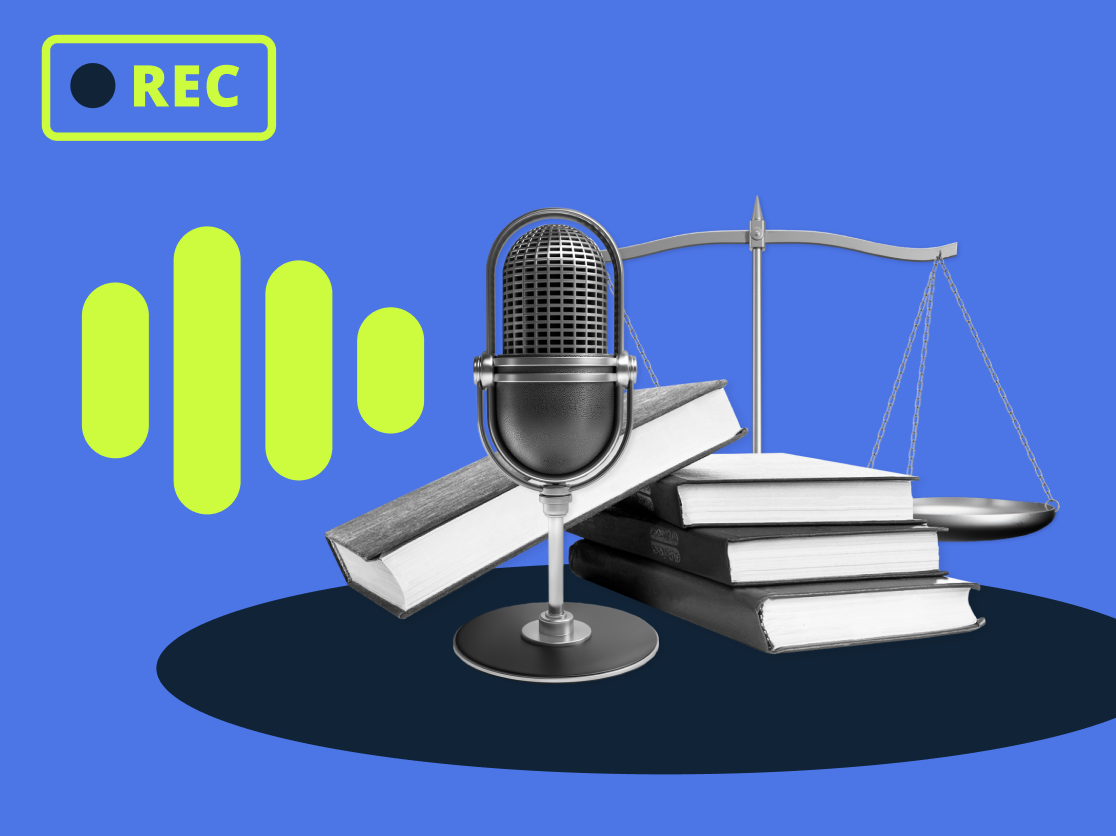Cold calling remains a cornerstone technique in many sales strategies. It serves as a direct approach to engage potential customers and generate new leads. The personalized nature of a phone call can break through the noise. It is a time-proven tool for creating real-time engagement, sales, and immediate feedback.
What is cold calling?
Cold calling is a sales strategy. Salespeople contact potential customers who have not previously expressed an interest in the offered products or services. This method involves reaching out to prospects via phone to introduce them to what the company has to offer. This approach is done with various techniques in hopes of generating interest or making a sale.
Does cold calling work?
Cold calling is difficult
Cold calling often feels like an uphill battle for sales professionals, as the numbers starkly illustrate the challenges they face:
- Low success rate: Only 2% of cold calls lead to an appointment.
- High effort, low yield: It takes an average of 18 calls just to connect with a buyer.
- Buyer resistance: 59% of buyers prefer to avoid phone calls altogether.
Yet it works
Despite these obstacles, this method can yield substantial results. Particularly so with certain cold calling strategy approaches and target audiences according to Worldmetrics.org:
- Executive receptiveness: 57% of C-level executives are willing to take meetings from a cold call.
- Effective results: 78% of decision-makers have taken an appointment or attended an event resulting from a cold call or email.
- Action-driven: 78% of decision-makers report taking action due to an appointment set by a cold call.
While cold calling is undeniably challenging, it remains a potent tool in the arsenal of sales strategies. High rejection rates and significant buyer resistance are just a part of the game. It is especially valuable when targeting the upper echelons of company leadership.
How to cold call
Effective cold calling requires a systematic approach to maximize your chances of sales and success. Here are the essential steps and best practices to prepare and execute a successful call:
1. Research your target
Before dialing, thoroughly understand your target audience. Investigate their industry, company, and specific individuals you plan to contact. For B2B calls, look into recent news about the company, financial reports, press releases, and LinkedIn profiles. Try to grasp their business challenges and goals. This deep dive helps target your message by aligning it with their current needs and strategic initiatives.
2. Build a targeted list
Compile a prospect list. Use defined criteria such as industry relevance, job titles, recent business activities, and potential needs. Explore tools such as LinkedIn Sales Navigator or industry databases to ensure accuracy and relevance.
Prioritize your list based on the likelihood of interest in your product. Focus first on those with a history of purchasing similar solutions. Or those in growth phases likely needing your services.
3. Craft your pitch
Develop a clear and concise pitch that communicates the unique value of your offering. Emphasize how it addresses the prospect’s specific problems or improves their operations. Include statistics or case studies that prove the effectiveness of your product.
Practice this pitch with colleagues or through role-playing scenarios to refine your delivery and anticipate potential questions or objections.
4. Plan your timing
Identify the best times for making calls based on research into your prospects’ industry work patterns. Optimal times often include mid-mornings and mid-afternoons. Try to avoid Mondays and Fridays when professionals are either planning their week or winding down. Consider the time zone differences to ensure your calls are made at appropriate hours.
5. Make the call
Initiate the call with professionalism and politeness, introducing yourself and quickly stating the purpose of your call. Use the first few seconds to grab attention by mentioning a mutual connection or referencing a recent company achievement.
Actively listen to the prospect’s responses to guide your conversation. Show empathy and understanding of their situation to build rapport.
6. Use technology
Study advanced calling technologies to set up and manage your cold calling process. Cold calling systems such as MightyCall offer useful features such as auto-dialers for increased call volume. By implementing this software, you can also use CRM integrations to track interactions and follow-ups. It will ensure no leads fall through the cracks. Use call recording features to review your calls and improve tactics by analyzing what works and what doesn’t.
7. Follow up
After the cold call, immediately send a follow-up email that recaps the discussion and outlines next steps. This could include a link to a detailed proposal, additional product information, or a calendar link to schedule a further meeting.
Consistent follow-up, ideally within 24 hours, keeps the momentum going and shows your dedication to meeting their needs.
10 cold calling tips for new leads
1. Optimize call timing with data analytics
Apply data analytics to pinpoint the best times for calling specific leads. Tools such as Google Analytics can help identify when your prospects are most active on emails or social media. They will help with the call scheduling during their peak engagement times. For example, if analytics show high activity on social media during late afternoons, schedule your calls around that time.
2. Integrate AI-powered scripting tools
Incorporate AI tools like Gong.io, which analyze your sales cold calling recordings to provide real-time feedback and script suggestions. This can help refine cold calling sales pitches and improve overall call success. It will suggest language that has historically led to successful outcomes.
3. Think about behavioral targeting
Use behavioral data from platforms such as HubSpot. Segment your leads based on their interactions with your website or responses to previous campaigns. If a lead frequently downloads content about a specific topic, adjust your cold calling pitch to their interests.
4. Engage with hyper-personalized introductions
Work on introductions that reference specific, recent activities relevant to the recipient. For example, congratulate them on a recent business achievement or mention a recent industry event they attended. This shows that you are paying attention to their needs and successes, which can help build rapport.
5. Navigate legal landscapes with compliance tools
Stay compliant with cold calling regulations by using services such as CompliancePoint. Or you could employ an auto-dialer system with native integrations to the Do Not Call Registry. Ensuring all contacts are legally approvable for calls protects your business from potential legal issues.
6. Implement emotional intelligence training
Train your team in emotional intelligence to improve their ability to read and respond to emotional cues when cold calling. For example, recognizing when a prospect sounds rushed or uninterested can help the caller adjust their approach. This will potentially save a lead that might otherwise be lost.
7. Develop an objection-handling map
Create a detailed map of potential objections and corresponding responses based on previous call data. This preparation allows callers to handle objections smoothly and maintain control of the conversation, thereby improving call outcomes.
8. Systematize follow-up with automated workflows
Automate your cold calling follow-up process within your CRM to ensure timely and personalized communication post-call. Include relevant content such as case studies or detailed product information that was discussed during the call. It will reinforce the value proposition and keep your brand on top of their mind.
9. Use split-testing for continuous improvement
Conduct A/B testing on different aspects of your cold calls, such as tone, pitch, and even different times of day. Tools such as CallRail can track the performance of each variation. They will give you tips and help you identify the most effective strategies for engaging prospects.
10. Monitor psychological triggers
Educate your team to identify and apply psychological tips and triggers such as reciprocity and social proof during calls. For instance, mentioning that other industry leaders have adopted your solution can trigger the social proof effect. It will make the prospect more open to your product.
These cold calling tips cover both hard and soft skills. Your team will need to implement both to form relationships with potential customers and partners.
Types of cold calling
Cold calling branches into two main types: Business-to-Consumer (B2C) and Business-to-Business (B2B). Each type targets different audiences and requires distinct approaches and tactics to engage potential customers. Here’s a table to expand upon the above cold calling tips, explaining the strategic differences between the calling types:
| Aspect | B2C cold calling | B2B cold calling |
|---|---|---|
| Target audience | Individual consumers | Businesses, typically specific departments or roles |
| Decision process | Often impulsive, shorter decision cycles | Longer sales decision cycles, often involves multiple stakeholders |
| Call objective | Typically B2C cold calls aim to close the sale quickly or generate a lead for further engagement | Often B2B cold calling aims to set up a meeting or detailed presentation |
| Product/service complexity | Generally simpler products or services | Often more complex solutions requiring detailed explanations |
| Volume of calls | Higher volume of cold calls to reach consumers | Lower volume of sales calls, but more research and customization per call |
| Emotional appeal | More emotional, personal appeal | Cold calling more focused on ROI, efficiency, and business value |
| Compliance | Must comply with consumer protection laws such as TCPA | Must comply with industry-specific sales regulations, often less stringent than consumer laws |
| Follow-up | Quick sales cold calling follow-up, often aiming to capitalize on impulsive buying behaviors | Structured follow-up, often involving multiple touchpoints over a longer period |
| Customization | Less customization per call, broader appeal | Highly customized sales cold calls based on business needs and industry specifics |
| Sales cycle | Shorter sales cycle | Longer sales cycle with more emphasis on relationship building |
Cold call script examples
One of the cold calling tips was making a good sales script. Here are three example scripts for different scenarios. Each is made to help guide the conversation towards building interest and moving the prospect further down the sales funnel.
Real estate investment opportunity call (B2C)
Greeting and introduction: Begins the cold calling conversation on a friendly note and identifies the caller and their association. It will help establish a professional setting for future sales.
Purpose of call: Best cold calling clarifies why the caller is reaching out, directly linking the conversation to the prospect’s interests. It also suggests a personal approach based on the prospect’s investment habits for better sales.
Highlighting a feature: Focuses on a specific benefit of the property that is likely to capture the investor’s interest.
Engagement question: Concludes the cold calling introduction with a question that invites the prospect to participate in the conversation. This sets the stage for a deeper discussion about the property’s potential benefits.
Cold call for listing presentation for homeowners (B2C)
Greeting and introduction: Politely introduces the caller and their company, which helps in establishing rapport with the homeowner while cold calling.
Building credibility: Indicates specific successes in the prospect’s area, building credibility and suggesting that the caller has valuable local market sales knowledge.
Personalized observation: This cold calling tip demonstrates that the caller has done their homework. It also shows a specific interest in the prospect’s property. This will personalize the call and potentially increase the homeowner’s interest.
Call to action: Encourages the prospect to a meeting, focusing on the potential benefits while also maximizing property value. Additionally, it introduces a sense of urgency by suggesting a meeting “this week,” which can encourage a quicker decision.
Cold Call Script for Construction Services (B2B)
“Good morning [Name], this is [Your Name] from [Company Name], where we specialize in providing construction solutions.”
Greeting and Introduction: The best cold call starts the conversation with a professional tone. It introduces the caller and the company to immediately set the context.
Connecting needs to services: Ties the cold call directly to the prospect’s current business initiatives, showing awareness of their expansion plans. It also positions the caller’s services as a timely solution.
Demonstrating expertise and credibility: Provides concrete examples of past successes with reputable firms, highlighting the benefits of services which can reduce costs.
Call to action: Invites the prospect to a meeting, specifying a time frame which encourages a sense of urgency. It also focuses the conversation on mutual benefits, suggesting a partnership approach rather than a simple transaction.
How to measure the cold calling effectiveness
Measuring the effectiveness of cold calling involves tracking specific metrics that provide insights into the performance of your sales efforts. Here are key metrics to consider:
- Conversion rate: This measures the percentage of cold calls that result in a desired action, such as a sale or appointment. A higher conversion rate indicates more effective calls.
- Call-to-appointment ratio: Tracks how many calls it takes to secure an appointment or meeting. This metric helps gauge the success of your pitch and the quality of your prospect list.
- Average call duration: Reflects the average length of your calls. Longer calls can imply more engaging conversations, which might lead to higher conversion rates.
- Lead response time: The time it takes for a prospect to respond after a cold call. Faster responses can indicate higher interest or effectiveness in sparking immediate action.
- Drop-off rate: Measures how many prospects discontinue calls before they can be qualified or moved along the sales pipeline. A high drop-off rate might suggest issues with the call approach or target audience alignment.
Tracking and analyzing these can help fine-tune your approach, making your cold calling efforts more strategic and successful.
Cold calling, warm connections
Cold calling can set the stage for building warm, lasting connections if you use the right strategies and tools. Whether you’re diving into B2C or B2B realms, adapting your approach to fit specific industries is key. Good scripts, help tips, and a focus on personalized service transform a cold lead into a relationship.
Tools such as MightyCall strengthen your cold calling efforts, making interactions and sales more effective and personalized. MightyCall helps in auto dialing, organizing your calls, managing follow-ups, and evaluating the success of your campaigns. With the correct approach and supportive tools, every cold call is a step towards a new partnership.





























